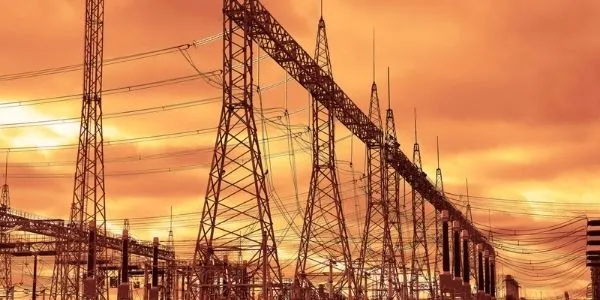Automation has revolutionized various industries, and the energy sector is no exception. With the advancement in technology, distribution automation for substations and pole tops has emerged as a game-changer. This article explores the key advancements in distribution automation, the benefits it brings, and its impact on the energy landscape.
Distribution Automation for Substations and Pole Tops
Distribution automation refers to the use of advanced technologies and systems to monitor, control, and optimize the flow of electricity in distribution networks. Substations and pole tops play crucial roles in the distribution infrastructure, making them ideal points for implementing automation solutions. By automating these key components, utilities can improve operational efficiency, reliability, and overall performance.
Importance of Distribution Automation
Distribution automation offers several advantages over traditional manual systems. It enables utilities to remotely monitor and control various aspects of the distribution network, resulting in faster response times, reduced downtime, and improved customer satisfaction. Moreover, automation enables utilities to integrate renewable energy sources, manage peak loads efficiently, and enhance grid resilience. Distributed Network Protocol (DNP) is a commonly used protocol. Master stations with SCADA systems, RTU simulators, IEDs, etc can be installed with this protocol for ease of communication and functionality. Interoperation of IEDs from different manufacturers may need international standard protocols to be used.
Enhanced Monitoring and Control Systems
Advancements in distribution automation have led to the development of highly sophisticated monitoring and control systems. These systems utilize sensors, intelligent electronic devices (IEDs), and communication technologies to collect real-time data from substations and pole tops. By continuously monitoring voltage levels, current flows, and equipment status, utilities can identify issues promptly and take proactive measures to ensure uninterrupted power supply.
Intelligent Fault Detection and Self-Healing Networks
One of the significant advancements in distribution automation is the implementation of intelligent fault detection and self-healing networks. Through advanced algorithms and analytics, utilities can detect faults or abnormalities in the distribution system and automatically isolate affected areas. This self-healing capability minimizes the impact of faults, reduces outage durations, and improves overall system reliability.
5. Integration of Renewable Energy Sources
With the growing emphasis on renewable energy, the integration of distributed generation from sources like solar and wind is becoming increasingly important. Distribution automation facilitates the seamless integration of these energy sources into the grid. By dynamically managing power flows and balancing generation and demand, utilities can optimize the use of renewable resources and improve energy efficiency.
Advanced Metering Infrastructure
Advanced metering infrastructure (AMI) is an integral part of distribution automation. AMI systems enable utilities to gather detailed consumption data from individual customers. This information helps utilities in load forecasting, demand response programs, and accurate billing. By providing customers with real-time energy usage information, AMI systems also promote energy conservation and awareness.
Grid Optimization and Load Management
Distribution automation enables utilities to optimize grid performance and manage load effectively. Through advanced analytics and control algorithms, utilities can monitor and control voltage levels, phase balancing, and power factor correction. By optimizing grid operations, utilities can reduce losses, improve power quality, and enhance energy efficiency.
Cybersecurity Considerations
As distribution networks become increasingly interconnected and reliant on digital technologies, ensuring robust cybersecurity measures is of paramount importance. Utilities must implement stringent security protocols and encryption techniques to safeguard automation systems from cyber threats. Continuous monitoring, vulnerability assessments, and employee training are essential to maintaining a secure and resilient distribution infrastructure.
Benefits of Distribution Automation
The adoption of distribution automation brings several benefits to utilities, customers, and the environment. Some key advantages include:
- Improved reliability and reduced outage durations.
- Enhanced operational efficiency and cost savings.
- Integration of renewable energy sources.
- Accurate billing and demand response capabilities.
- Better customer experience and satisfaction.
- Reduced environmental impact through optimized energy usage.
Challenges and Future Outlook
While distribution automation offers immense potential, it also presents challenges that need to be addressed. Some challenges include the high upfront investment, interoperability of systems, and the need for skilled personnel. However, as technology continues to evolve and costs decline, these challenges are expected to diminish. The future of distribution automation looks promising, with increased adoption and innovation driving further advancements in the field.
Conclusion
Distribution automation for substations and pole tops represents a significant leap forward in the energy industry. By leveraging advanced technologies and systems, utilities can optimize the distribution network, enhance reliability, and integrate renewable energy sources. The benefits of distribution automation are far-reaching, with improved operational efficiency, better customer experience, and reduced environmental impact. As technology continues to evolve, the future holds even greater possibilities for distribution automation.
In conclusion, distribution automation has brought about significant advancements in the energy sector. By implementing intelligent monitoring and control systems, self-healing networks, and integrating renewable energy sources, utilities can enhance operational efficiency, improve reliability, and reduce environmental impact. The future of distribution automation looks promising, with ongoing innovation and increasing adoption driving further progress in this field.


No comments yet